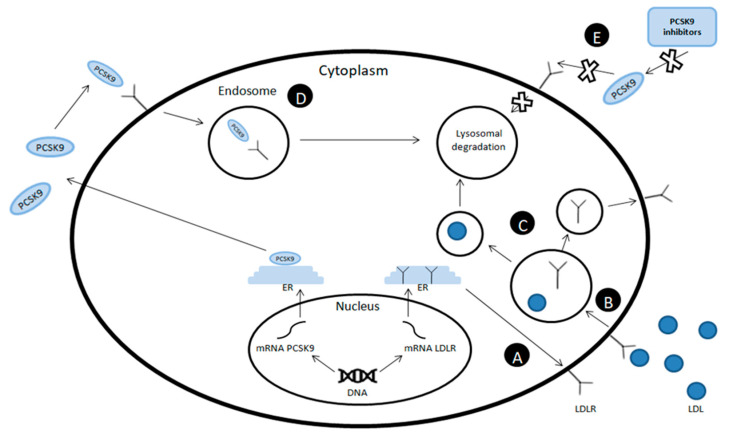Figure 1.
Mechanism of action of proprotein convertase subtilisin/kexin type 9 (PCSK-9) inhibitors. (A) Intracellularly produced low-density lipoprotein receptor (LDL-R) is transported to the cell membrane, where it is responsible for binding low-density lipoprotein (LDL) particles. (B) After LDL is attached to LDL-R, the complex is endocytosed and then broken down into substrates in the endosome. (C) The LDL molecule undergoes lysosomal degradation, and the LDL-R is transported back to the cell membrane. (D) At the same time, in other parts of the cell membrane, PCSK-9 binds with LDLR, which causes endocytosis of the complex thus formed and its subsequent degradation in the lysosome. (E) The use of PCSK9 inhibitors causes the binding of free PCSK-9 molecules, which prevents them from binding to LDL-R and subsequent receptor degradation. ER: endoplasmic reticulum.

